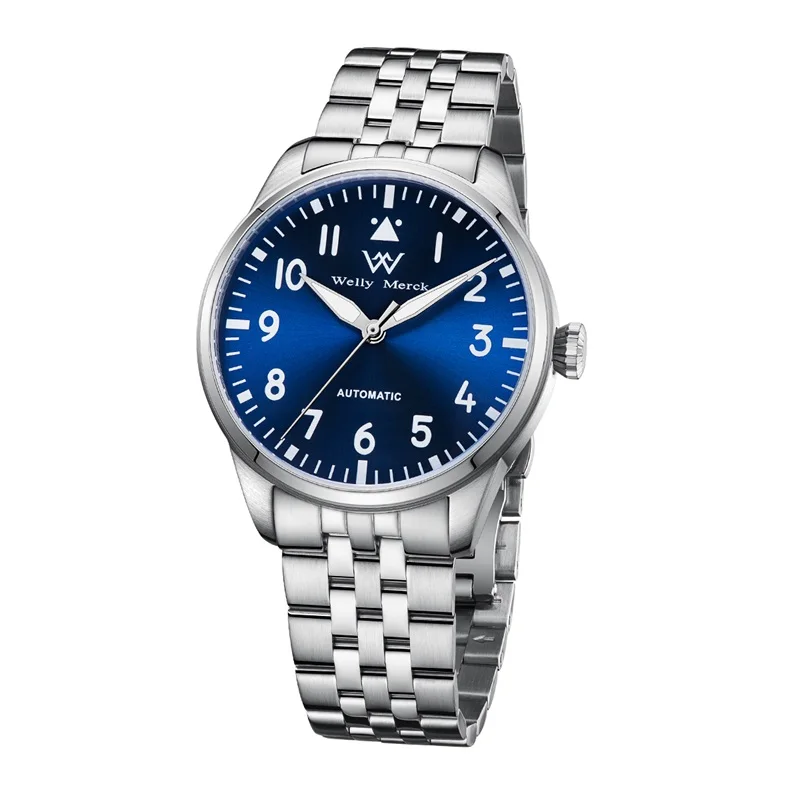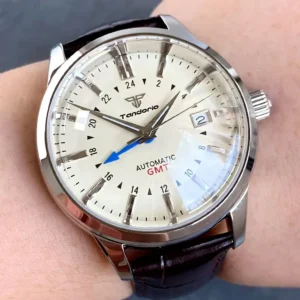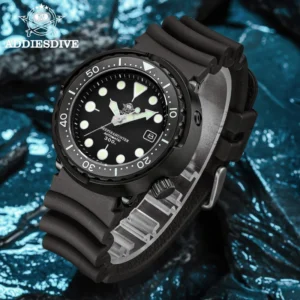Many watch enthusiasts find themselves caught between two worlds: the desire to track multiple time zones during travel and the need for a reliable underwater timepiece. The question naturally arises – can a GMT watch double as a dive watch? While both types are precision instruments, they were designed with fundamentally different purposes in mind. GMT watches excel at tracking multiple time zones, while dive watches are safety tools first and foremost.
This creates a practical dilemma for those who travel and dive, as carrying two specialized watches isn’t always ideal. Some GMT watches boast impressive water resistance ratings, leading many to wonder if they can safely serve double duty. But is water resistance alone enough for safe diving? Are there watches that successfully combine both functions?
In this comprehensive guide, we’ll explore the essential differences between these timepiece categories, examine potential safety concerns, and uncover specialized solutions that might just give you the best of both worlds.
Understanding What Makes a True Dive Watch
Dive watches aren’t merely timepieces that can withstand water – they’re specialized tools designed with diver safety as the absolute priority. Unlike fashion watches with modest water resistance, a proper dive watch serves as a critical backup timing device during underwater adventures, where miscalculations can have serious consequences.
These purpose-built instruments have evolved over decades to meet specific underwater challenges, with every feature carefully engineered to function reliably in one of Earth’s most hostile environments. Understanding what makes a true dive watch is essential for evaluating whether a GMT can adequately substitute for one.
The ISO 6425 Standard: Essential Requirements for Diving Safety
The International Organization for Standardization (ISO) established a rigorous set of requirements known as ISO 6425 to ensure dive watches meet minimum safety standards. These aren’t arbitrary guidelines – they represent essential features that could mean the difference between a safe dive and a dangerous situation:
- Minimum water resistance of 100 meters (330 feet), with each watch individually tested at 125% of its rated pressure
- Unidirectional rotating bezel with minute markings for timing dives
- Luminous visibility in total darkness at a distance of 25cm (9.8 inches)
- Magnetic resistance to maintain accuracy near diving equipment
- Shock resistance to withstand impacts during diving activities
- Chemical resistance to saltwater exposure
- A clearly visible running seconds indicator to confirm the watch is functioning
- Secure crown and case back systems to prevent water ingress
Watches meeting these stringent requirements earn the official “DIVER’S” marking, signifying compliance with these life-critical standards. The comprehensive testing goes far beyond basic water resistance checks found in ordinary watches.
Critical Safety Features Every Dive Watch Must Have
The unidirectional rotating bezel stands as perhaps the most critical safety feature on any dive watch. Unlike bidirectional bezels found on many GMT watches, dive bezels rotate only counterclockwise. This seemingly simple design choice serves a crucial safety function: if accidentally bumped while underwater, the bezel can only move in a direction that would indicate less remaining air than actually available – essentially creating a built-in safety margin.
Luminosity underwater isn’t just about convenience – it’s about survival. Professional-spec dive watches feature specialized luminous materials on hands, hour markers, and bezels that remain visible even in murky underwater conditions. This legibility can be critical when checking remaining dive time or decompression stops.
Screw-down crowns and case backs create multiple water-tight seals against pressure. These components undergo rigorous individual testing, as even a microscopic failure could lead to catastrophic flooding during a dive. The running seconds indicator serves as a continuous confirmation that the watch is functioning properly – vital information when your timepiece might be your last line of defense.
Why These Specific Requirements Matter Underwater
Consider this scenario: A diver at 60 feet (18 meters) needs to track a 15-minute safety stop but has a watch with a bezel that rotates both ways. An accidental bump against equipment could rotate the bezel, potentially indicating more remaining time than actually available – a dangerous miscalculation that could lead to decompression sickness.
Underwater emergencies can develop rapidly, often in conditions of poor visibility, high stress, and limited options. Each dive watch requirement directly addresses real-world challenges divers face. For instance, the chemical resistance to saltwater isn’t just about preserving the watch’s appearance – it prevents deterioration of critical components like bezel mechanisms and crown seals that could compromise safety.
These watches serve as backup timing devices to dive computers, providing redundancy for one of diving’s most critical parameters: time. In an environment where minutes can literally mean the difference between life and death, cutting corners on these essential features isn’t just unwise – it’s potentially dangerous.
GMT Watches: Design and Functionality
GMT watches emerged in the 1950s as commercial air travel expanded, creating a need for pilots and frequent travelers to track multiple time zones simultaneously. Unlike dive watches, which evolved primarily as safety instruments, GMT watches were designed to solve the practical challenges of a shrinking world and increasingly global travel.
These sophisticated timepieces allow wearers to track two or more time zones at once, making them invaluable companions for international travelers, business professionals coordinating across regions, and anyone maintaining connections across the globe.
Primary Purpose: Multi-Time Zone Tracking
The core function of any GMT watch is the ability to display at least two time zones simultaneously. This functionality helps travelers maintain awareness of both “home time” and “local time” without needing to reset their watch at each destination. For business professionals, this means easily scheduling calls across international boundaries without complex mental calculations.
The standard configuration displays local time via the main hour and minute hands while a separate GMT hand completes one full rotation every 24 hours, pointing to a 24-hour scale to show a second time zone. This elegant solution eliminates the AM/PM confusion that can occur when tracking time zones with significant differences.
This fundamental purpose represents a completely different design philosophy than dive watches – one focused on information management rather than underwater timing and safety. While both are specialized tools, they address entirely different problems.
Key Components and Features
GMT watches contain several distinctive components that enable their multi-time zone functionality:
- GMT/24-hour hand: This additional hand completes one full rotation every 24 hours (rather than 12) and points to a 24-hour scale
- 24-hour scale: Either printed on the dial or engraved on the bezel, this scale allows for proper reading of the GMT hand
- Bidirectional rotating bezel: On models with a 24-hour bezel, this allows for tracking a third time zone by rotating the bezel to align with the GMT hand
- Independent hour hand adjustment: “True GMT” models allow setting the local hour hand independently without stopping the movement
- Date complications: Often synchronized with the local time hour hand for traveler convenience
The differences between GMT and dual time watches might seem subtle, but understanding these distinctions helps appreciate their specific capabilities. Unlike dive bezels, GMT bezels typically rotate bidirectionally for easy adjustment when changing time zones – a feature that, while convenient for travelers, presents potential safety issues underwater.
Different Types of GMT Mechanisms
Not all GMT watches are created equal. Two primary mechanisms exist, each with distinct functionality:
True GMT (Traveler’s GMT)
– Local hour hand can be adjusted independently in one-hour increments
– Ideal for travelers as they can quickly adjust to new time zones without stopping the watch
– Date typically advances with the local hour hand
– Perfect for actively moving between time zones
Caller GMT (Office GMT)
– GMT hand adjusts independently while the main hands stay fixed
– Better suited for those who remain in one location but need to track another time zone
– Requires stopping the movement and adjusting all hands when traveling
– Often found in more affordable GMT watches
From a diving perspective, neither mechanism offers advantages over the other – the differences primarily affect convenience for travelers rather than underwater functionality. However, understanding GMT functionality on dive watches helps evaluate hybrid options that might serve both purposes.
GMT Watches Underwater: Capabilities and Limitations
Many GMT watches feature respectable water resistance ratings, sometimes even matching the numbers seen on dive watches. This often creates confusion about whether they can safely serve double-duty for diving. However, there’s a significant difference between being water-resistant and being a proper diving instrument.
Let’s examine where GMT watches meet diving requirements, where they fall short, and what risks might be associated with using them beyond their intended purpose underwater.
Water Resistance: What the Numbers Really Mean
Water resistance ratings on watches can be misleading without understanding the testing behind them:
| Rating | Non-Dive Watch Meaning | Dive Watch Meaning |
|---|---|---|
| 50m/5 ATM | Splash resistant, brief swimming | Splash resistant only |
| 100m/10 ATM | Surface swimming, snorkeling | Minimum for recreational diving, tested at 125% pressure |
| 200m/20 ATM | Recreational diving | Suitable for frequent diving, individually tested |
| 300m+ | Technical diving | Professional/saturation diving, extensive testing |
The key difference isn’t just the number – it’s the testing methodology. True dive watches undergo individual pressure testing at 125% of their rated depth, while standard water-resistant watches may only have spot-testing of samples from a production batch.
Additionally, dive watches are tested in real-world conditions that simulate temperature changes, crown manipulation, and pressure variations encountered during actual dives. Standard water-resistant watches, including most GMTs, aren’t subjected to this comprehensive testing regimen, meaning their water resistance may be less reliable in dynamic diving conditions.
The Critical Bezel Difference
Perhaps the most significant safety limitation of using a standard GMT watch for diving is the bidirectional bezel. Dive watch bezels rotate only counterclockwise for a crucial reason: if accidentally bumped (a common occurrence underwater), they can only indicate less remaining dive time than actually available – creating a safety buffer.
In contrast, a GMT watch’s bidirectional bezel can rotate either way if bumped against equipment or a boat ladder. If rotated clockwise during a dive, it could potentially indicate more remaining time than actually available – a dangerous situation that could lead to exceeding air supply or missing critical decompression stops.
Additionally, GMT bezels are typically calibrated for 24 hours (tracking days) rather than 60 minutes (tracking dive time), making precise dive timing difficult or impossible. The comparison between GMT and dive watch functionality reveals these critical differences that directly impact safety underwater.
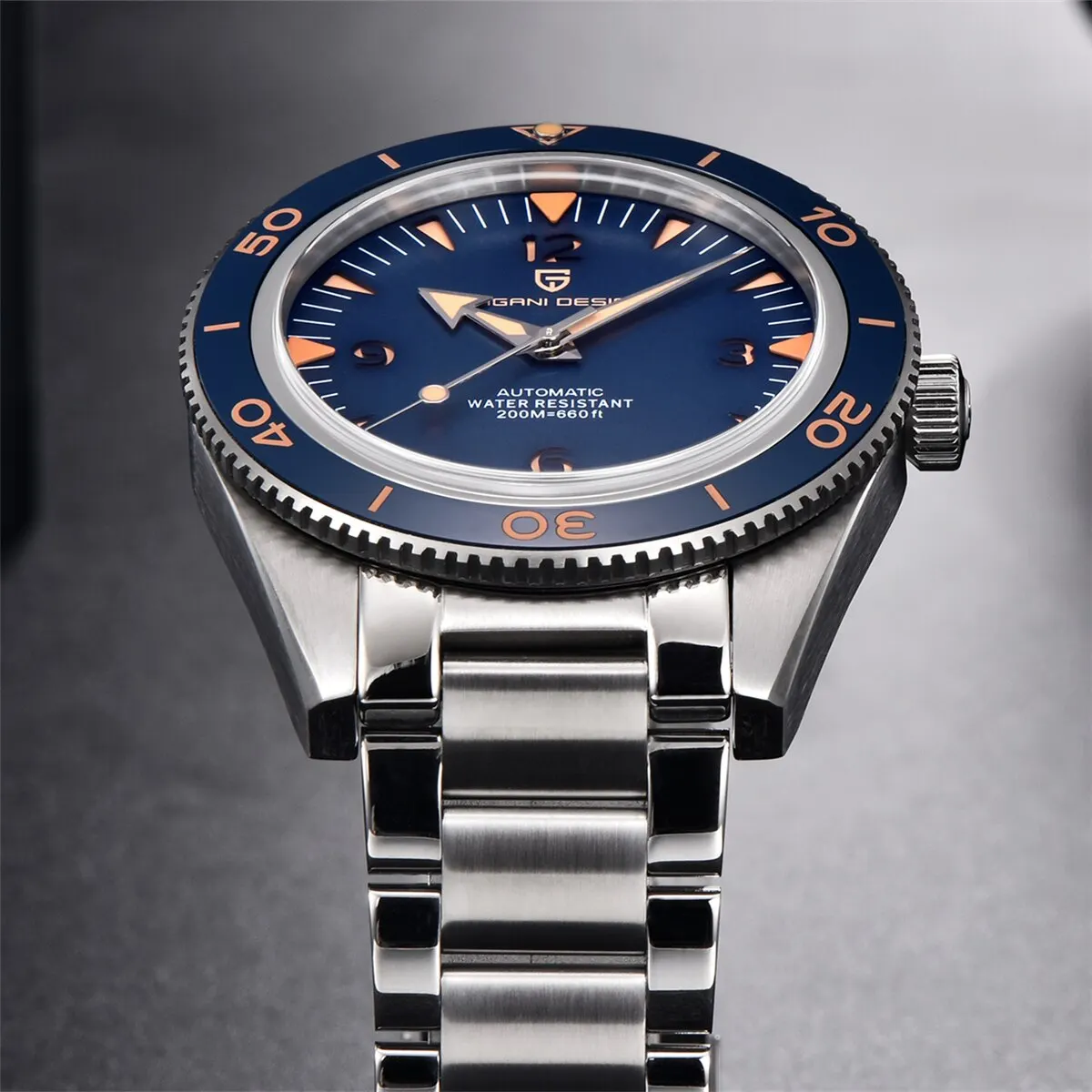
Underwater Legibility Concerns
Dive watches feature highly specific legibility requirements not found in typical GMT designs. These include:
- Super-luminous material applied generously to hands and markers
- High-contrast designs specifically optimized for underwater visibility
- Distinctly different shapes for hour and minute hands to prevent confusion
- A clearly visible running seconds indicator to confirm operation
Many GMT watches, while perfectly legible on land, prioritize aesthetics and versatility over the extreme legibility needed in underwater environments. Their hands may be thinner, lume application lighter, and contrast more subtle – all factors that become critically important in murky or dark diving conditions where split-second readings matter.
How GMT Watches Compare to ISO 6425 Standards
When directly evaluated against ISO 6425 requirements, standard GMT watches typically fall short in several key areas:
- Unidirectional bezel: Most GMT watches feature bidirectional bezels – an automatic disqualifier for dive certification
- Bezel markings: GMT bezels track hours, not minutes needed for dive timing
- Individual pressure testing: Many GMT watches lack the individual 125% pressure testing required
- Luminosity standards: Often insufficient for the underwater visibility requirements
- Running indicator requirement: Some GMT designs lack a clearly visible seconds hand
While many GMT watches offer good water resistance, they simply weren’t designed with the comprehensive safety requirements needed for reliable underwater use. The differences between GMT and dive watches extend well beyond aesthetics to fundamental safety considerations.
Specialized GMT Dive Watches: The Best of Both Worlds
For those who genuinely need both GMT functionality and proper diving capabilities, there’s good news: specialized watches exist that successfully combine both feature sets without compromising on safety. These purpose-built instruments meet all ISO 6425 requirements while also incorporating GMT complications – truly offering the best of both worlds.
These hybrid timepieces represent a specialized category that makes no compromises on diving safety while adding the convenience of multi-time zone tracking. They’re designed from the ground up to excel in both roles.
What Makes a True GMT Dive Watch
A true GMT dive watch must first and foremost be a proper dive watch that meets all ISO 6425 requirements:
- Full compliance with ISO 6425 dive watch standards
- Unidirectional 60-minute timing bezel for dive safety
- Appropriate water resistance with individual testing
- Excellent underwater legibility and luminosity
- Screw-down crown and other water integrity features
On top of this foundation, it must add proper GMT functionality, typically through:
– An additional GMT hand tracking a 24-hour cycle
– A 24-hour scale somewhere on the watch (dial, chapter ring, or internal bezel)
– Independent adjustment mechanisms for tracking multiple time zones
The key distinction is that these watches are built as dive watches first, then enhanced with GMT functions, rather than adding water resistance to a travel watch. This hierarchy of design priorities ensures safety isn’t compromised.
Key Features and Functionality
GMT dive watches employ various clever design solutions to incorporate both feature sets without compromise:
- Unidirectional dive timing bezel with internal 24-hour scale: Preserves the safety of a one-way rotating bezel while adding GMT functionality internally
- 24-hour chapter rings: Fixed scales around the dial perimeter for GMT tracking
- Enhanced water resistance: Often rated to 300m (1000ft) or beyond for serious diving capability
- True GMT movements: Independent hour hand adjustment for traveler convenience
- Extra-thick case construction: For enhanced pressure resistance
- Helium escape valves: For professional saturation diving applications
- Extra-luminous GMT hands: Ensuring all timing elements remain visible underwater
These design approaches allow GMT dive watches to maintain the safety-critical aspects of proper diving instruments while adding the practical benefits of time zone tracking. The engineering challenge is significant, which explains why these specialized watches often command premium prices.
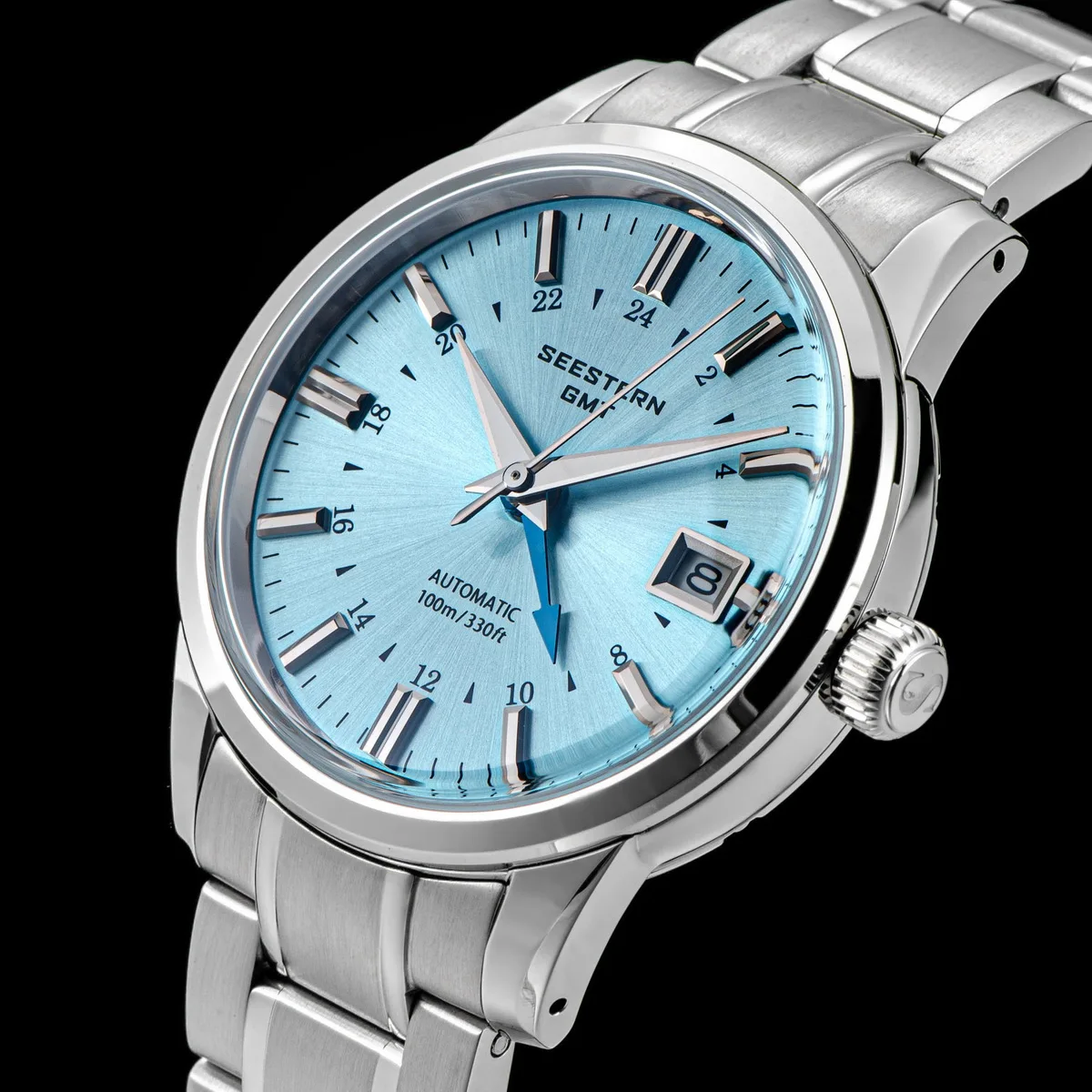
Notable Examples from Watchmakers
Several watchmakers have created innovative solutions to the GMT dive watch challenge. Without naming specific brands, these watches generally fall into several design categories:
- Internal GMT scale designs: Traditional dive bezel with GMT tracking via an internal rotating bezel or chapter ring
- Dual bezel systems: Complex engineering featuring both dive timing and GMT tracking bezels
- Digital-analog hybrids: Traditional analog dive timing with digital GMT displays
- Crown-controlled internal bezels: Dive timing via external bezel with crown-adjusted internal GMT bezels
These specialized tools typically command premium prices due to their complex construction and niche appeal. However, for those who regularly travel and dive, they represent the ideal solution without compromising on either functionality or safety.
Making the Right Choice: Practical Advice
Choosing the right watch ultimately depends on your specific needs, budget, and the activities you regularly engage in. There’s rarely a one-size-fits-all solution, particularly when it comes to specialized tools like dive watches and GMT timepieces. Here’s some practical guidance to help navigate these choices.
Surface Swimming vs. Serious Diving Considerations
The appropriate watch choice varies significantly based on your water activities:
Casual Swimming/Snorkeling (0-5m/0-16ft)
– Standard GMT watches with 100m+ water resistance are generally adequate
– Focus on proper crown position (fully screwed in) before water exposure
– Rinse with fresh water after exposure to chlorine or salt water
Recreational Diving (5-40m/16-130ft)
– A proper ISO-certified dive watch becomes essential
– Unidirectional bezel is a non-negotiable safety feature
– Consider dive computers as primary timing devices with watches as backup
Technical/Professional Diving (40m+/130ft+)
– Specialized high-pressure-rated dive watches only
– Multiple redundant timing systems recommended
– Additional safety features like helium escape valves for saturation diving
Understanding your true needs helps avoid both inadequate equipment and unnecessary expense. For many recreational water enthusiasts who occasionally dive, having separate specialized watches – a GMT for travel and a proper dive watch for underwater activities – may be the safest approach.
Alternative Methods for Time Zone Tracking While Diving
For divers who need to track multiple time zones but don’t want to invest in specialized GMT dive watches, several alternatives exist:
“Poor Man’s GMT” Technique
– Use a standard dive watch but note the hour offset mentally
– Set the minute hand precisely and calculate the hour difference
– Limited but functional for basic time zone tracking
Dive Computer Solutions
– Many modern dive computers include dual time displays
– Primary focus remains on dive metrics with time zone tracking as secondary function
– Provides both precise dive timing and basic travel functionality
Digital Backup Options
– Waterproof digital watches as secondary timepieces
– Can provide GMT functionality while dive watch handles timing
– Affordable redundancy for travelers who dive
These approaches offer practical compromises that prioritize diving safety while providing workable solutions for time zone management. The practical applications for GMT dive watches vary widely based on individual needs and diving habits.
Situations That Warrant a Dedicated Dive Watch
Certain scenarios absolutely call for a proper, dedicated dive watch rather than attempting to use a GMT watch underwater:
- Night diving: Demands exceptional luminosity and legibility
- Technical diving: Requires absolutely reliable timing for decompression stops
- Cave/wreck penetration: High-risk environments where equipment reliability is critical
- Professional diving work: Where timing directly impacts job performance and safety
- Remote location diving: Areas without easy access to dive computers or batteries
In these situations, the specialized features of a proper dive watch aren’t just preferences – they’re essential safety equipment. Many serious divers maintain a collection of automatic dive watches for diving while using separate GMT watches for travel.
The various GMT functions in tool watches demonstrate the versatility of these complications across different watch categories, but safety considerations should always take precedence when diving is involved.
Automatic Chronograph Watches, Classic Style Dive Watches
$3,053.06 Select options This product has multiple variants. The options may be chosen on the product pageBronze Automatic Watches, Military Inspired Automatic Watches, Professional Spec Dive Watches
Price range: $1,442.21 through $1,442.82 Select options This product has multiple variants. The options may be chosen on the product pageProfessional Spec Dive Watches, Titanium Automatic Watches
$574.74 Select options This product has multiple variants. The options may be chosen on the product pageClassic Automatic Dress Watches, GMT Automatic Watches, GMT Dive Watches
Price range: $468.93 through $552.94 Select options This product has multiple variants. The options may be chosen on the product pageDay Date Automatic Watches, Professional Spec Dive Watches
Price range: $751.60 through $790.26 Select options This product has multiple variants. The options may be chosen on the product pageClassic Automatic Dress Watches, Classic Style Dive Watches
Price range: $742.56 through $1,099.56 Select options This product has multiple variants. The options may be chosen on the product page
Using Standard GMT Watches Safely Around Water
For those who choose to use standard GMT watches around water – a common and generally acceptable practice for many water activities – understanding their true capabilities and limitations is essential. While not ideal for serious diving, most quality GMT watches can handle many water situations when properly maintained and used within their limits.
Appropriate Water Activities for GMT Watches
Most quality GMT watches with appropriate water resistance can safely handle:
- Swimming pools (100m+ water resistance): Chlorinated water at surface pressure
- Ocean swimming (100m+ water resistance): Surface activities without significant pressure
- Snorkeling (100m+ water resistance): Near-surface exploration without deep descents
- Very shallow recreational diving (200m+ water resistance): With extreme caution and proper understanding of limitations
Remember that water resistance ratings on non-dive watches provide less margin for error. A 100m-rated GMT watch isn’t designed for actual 100m dives – the rating indicates the static pressure tested in laboratory conditions, not dynamic pressure experienced during active water sports.
Maintaining Water Resistance
Water resistance isn’t permanent – it requires regular maintenance to remain effective:
- Have water resistance professionally checked annually if the watch is regularly exposed to water
- Replace gaskets and seals during regular service intervals (typically every 3-5 years)
- Always ensure the crown is fully screwed down before water exposure
- Avoid operating the crown or pushers underwater under any circumstances
- Rinse with fresh water after exposure to salt water, chlorine, or other chemicals
- Watch for signs of moisture inside the case, which indicates immediate service is needed
These precautions help maintain the integrity of your watch’s water resistance system. Even small failures in these systems can lead to costly damage that may not be covered under warranty if the watch was used beyond its intended purpose.
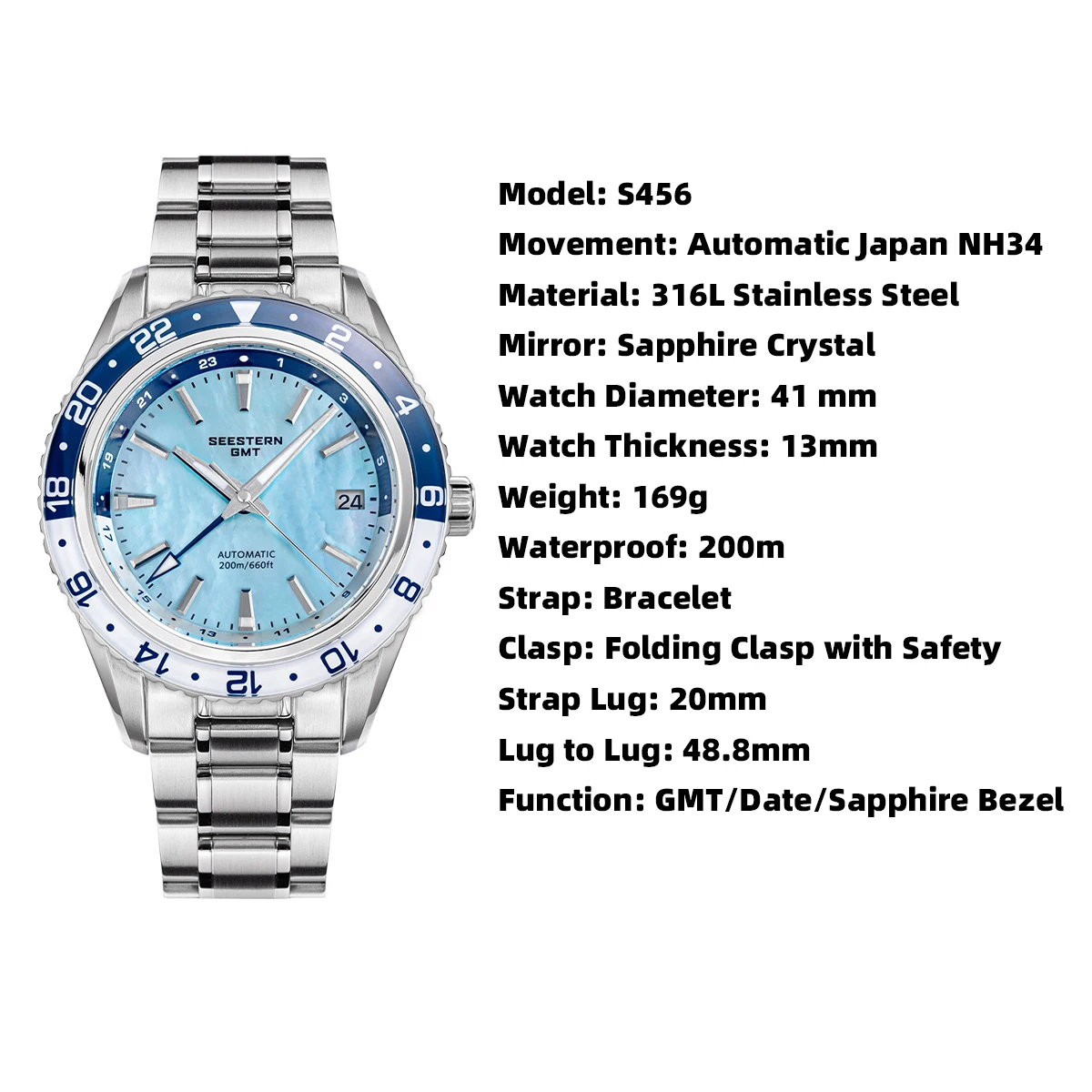
Testing Before Submersion
Before exposing any watch to water, especially after service or a long period without water contact, consider these testing approaches:
Professional Pressure Testing
– The most reliable method for confirming water resistance
– Watch repair shops can perform this service relatively inexpensively
– Recommended annually for watches regularly used in water
DIY Preliminary Checks
– Examine the crown and case back for obvious gaps or issues
– Listen for unusual sounds when gently shaking the watch
– Check for free movement of the crown and ensure it screws down smoothly
– For push-pull crowns, ensure they seat firmly against the case
Gradual Exposure Method
– Start with very brief, shallow exposure
– Check for condensation or water ingress
– Gradually increase exposure time and depth if no issues appear
– Stop immediately if any moisture appears inside the case
If water does enter your watch, immediately remove it from water, dry the exterior, and take it to a watchmaker as soon as possible. Quick action can sometimes prevent extensive damage to the movement.
Conclusion
The question “Can you use a GMT watch for diving?” doesn’t have a simple yes or no answer. Standard GMT watches, while often water-resistant, lack critical safety features required for proper diving. Their bidirectional bezels, different scale markings, and typically less rigorous water resistance testing make them unsuitable for serious underwater use.
For casual water activities and surface swimming, many quality GMT watches perform adequately. However, for actual diving – where timing can be a matter of safety – a proper dive watch or specialized GMT dive watch remains the appropriate tool.
Those needing both functions have several options: using separate specialized watches for each purpose, investing in a purpose-built GMT dive watch, or using alternative methods to track time zones while diving with a proper dive watch. The best choice depends on individual needs, diving frequency, and budget considerations.
Whatever option you choose, prioritizing safety over convenience should guide your decision. After all, the best watch for any situation is one that reliably performs the specific functions needed for that environment – whether that’s tracking multiple time zones during international travel or safely timing dives beneath the waves.
For those seeking specialized timepieces that excel in specific environments, classic-style dive watches offer traditional functionality with proven reliability, while specialized GMT dive watches represent the pinnacle of versatility for the traveling diver.

